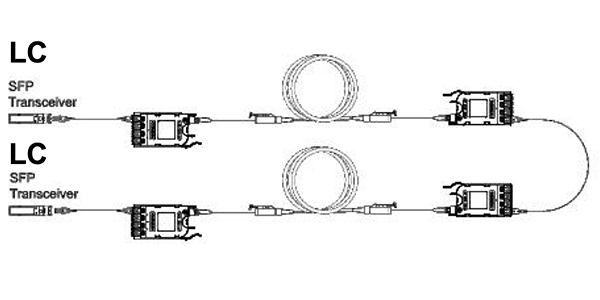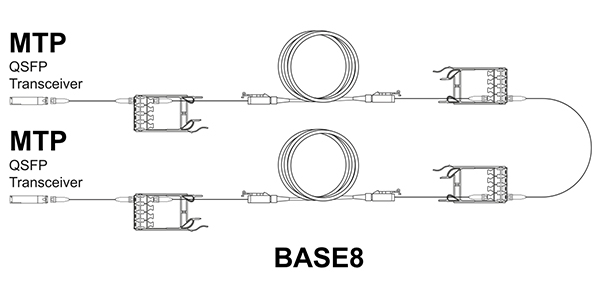Corning multimode and single-mode fiber structured cabling solutions support Ethernet standard 10/40/100/200G data rates and provide a migration path to emerging 400G and future 800G/1.6 Tb data rates. Data center operators clearly expect connectivity solutions to support multiple Ethernet data rate generations to ensure a 10- to 15-year service life is maintained.
After much discussion with ASIC, transceiver and switch vendors, the solutions today (40/100/200GbE) and in the future (400/800GbE and 1.6 Tb) all converge on duplex-fiber serial and 8-fiber parallel transmission with some interim solutions along the way.
With current transceiver and switch vendor trends leading to 2- and 8-eight fiber transceivers, there is a need for optimized optical connectivity solutions. Traditional MTP®-based solutions are based on 12-fiber connectors, which is not always divisible by eight. Based on this information, to simplify network design and operation, improve fiber utilization, and reduce costs and attenuation in an optical link, an 8-fiber-based infrastructure provides the optimal solution.
A base-8 infrastructure (illustrated in Figure 1) consists of backbone trunks that have 8-fiber legs and modules that have four ports (8 fibers) and 8-fiber harnesses. Since parallel connectivity uses eight fibers out of the available 12 fibers in the connector, the issue arises with a base-12 infrastructure to either leave the four middle fibers dark or use some type of conversion device. A conversion device can convert two 12-fiber links into three 8-fiber links. This allows all fibers to be utilized, giving you three parallel links for each 24 fibers of the installed base-12 trunk cables. This is not necessary when a base-8 infrastructure is installed.



